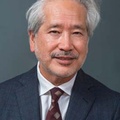Affirmative action is a set of policies and practices aimed at promoting diversity and equal opportunities for individuals from historically disadvantaged or underrepresented groups in areas such as education, employment, and business. The primary goal of affirmative action is to address past and present discrimination and to create a level playing field for marginalized groups by actively seeking to increase their representation in certain fields or institutions.
In the context of education, this means evaluating race as part of the holistic view of a student’s application. Recently, we have seen the gutting of affirmative action policies in higher education by the Supreme Court, which deeply saddens me. The policy put into place to help account for systematic racism and oppression, is being taken away by Asian American plaintiffs. We as a community cannot stand for this ignorant attitude, one which promotes infighting among minorities.
In 1978, one of the first cases brought to the Supreme Court was U.C. Regents vs. Bakke in which it was ruled that using race as a holistic measure of a student, was acceptable under the Fourteenth amendment. However, the practice of setting strict racial quotas, such as saving seats for only minority students, violates the Equal Protections Clause of the Fourteenth Amendment. For decades, affirmative action policies have been following the precedent set by Regents v. Bakke and numerous other cases that were brought before the Court. Yet this most recent case, Students for Fair Admissions v. Harvard undermines that precedent effectively ending the practice entirely.
The most disappointing and enraging aspect of this decision is the fact that Asian American students are the face of the death of affirmative action policies. Affirmative action was implemented to account for the atrocities committed by our governmental system. Slavery, systemic racism, and oppression were all addressed by this pathway. This policy was by no means a fix for those problems, but it was a start. The end of this practice erodes racial equity in higher education.
Systemic barriers such as underfunded public schools, housing discrimination, and income inequality, all of which disproportionately affect people of color, block the path for people from minority groups to be accepted into university. By implementing race-conscious admissions, universities were able to account for these systemic barriers and take in students who might otherwise be put down by the systems in place. The point of view that these minority students are somehow less qualified to be admitted into these institutions is baffling.
Affirmative action recognizes that certain racial and ethnic groups, women, and other marginalized communities have historically faced systemic discrimination and unequal access to education. For instance, African Americans and other minorities have endured centuries of slavery, segregation, and institutional racism, which has had long-lasting effects on their socioeconomic status and educational opportunities. Affirmative action seeks to rectify these past injustices by providing opportunities for individuals from these groups to access higher education.
As a college student, I am understanding of the attitude that some of my misguided peers have. They think that the end of affirmative actions is good because “deserving” students will be accepted into universities based on only their merit. However, they are mistaken. Not considering race into admissions negates the historical injustices that the minority groups, such as African Americans and women, have faced. Further, affirmative action policies implemented by college admissions are designed to promote diversity. This is not limited to just race or ethnic makeup. The diversity that the universities were promoting was diversity of experience and perspective.
Higher education needs to be representative of the population. A diverse student body fosters an environment where students interact with peers from different backgrounds, cultures, and perspectives. Exposure to diversity encourages critical thinking, empathy, and open-mindedness. These skills are crucial in preparing students for an increasingly interconnected and globalized world. Students who learn in diverse environments are better equipped to work collaboratively with people from different backgrounds, which is beneficial in professional settings. Further, in a globalized and interconnected world, diverse teams bring unique ideas, creativity, and problem-solving approaches. Graduates from diverse universities are better prepared to navigate diverse workplaces and contribute positively to society. Companies and organizations with diverse workforces tend to be more innovative, productive, and adaptable to changing market demands.
I feel as though I should share a personal anecdote to summarize my perspective. As an Asian American male, I am saddened to see my peers be the spearheads tearing down affirmative action. Our parents and grandparents sacrificed so much to get us to America. Because of their sacrifice I, along with many other Asian Americans, have had the resources and opportunities needed to succeed. African Americans have suffered for over 200 years in this country if not longer. The legacy of slavery, indentured servitude, Jim Crow segregation, redlining, and many more systemic, racist practices live on today. This legacy constantly makes sure that African Americans are afforded the least amount of opportunities, the same ones that I took for granted.
I remember sitting in my 1st grade classroom during snack time. I looked over to my African American classmate and asked why he didn’t have a snack. He replied shortly, “Because my mom has to feed me and my sister tonight.” These are the types of experiences that should be accounted for in higher education. The hardships placed upon African Americans and other historically discriminated groups, and their rise above them gives them a perspective some of us will never have. The death of affirmative action is truly heartbreaking and those who seek diversity and inclusion mourn at its grave.
© 2023 Drew Yamamura





